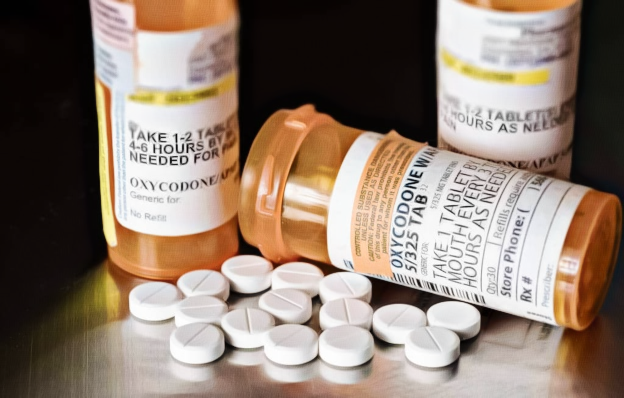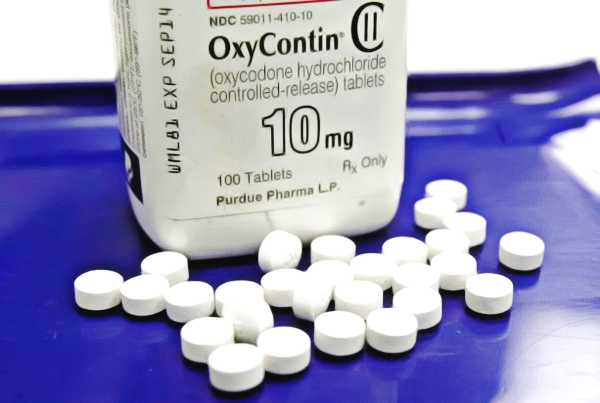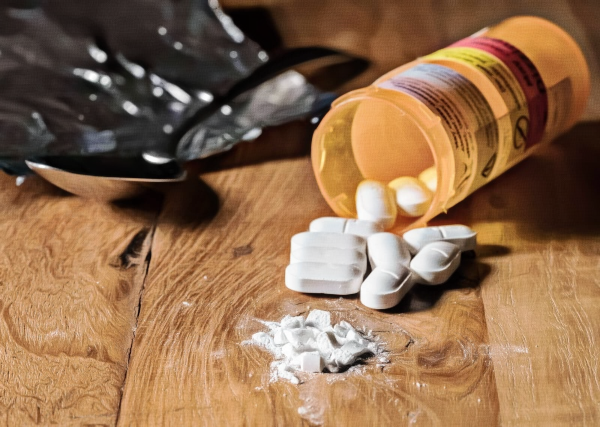What is Oxycodone?
Oxycodone is a prescription medication used for pain relief.
What is oxycodone used for?
Oxycodone is typically prescribed for severe pain, when other drugs were either not effective or not well tolerated.
Is oxycodone an opiate?
The terms “opiate” and “opioid” are often used interchangeably, but they are two different things.
- An opiate is either derived from or contains opium. These drugs provide pain relief by binding to opioid receptors in the central nervous system.
- Opioids work in the same way, but may not be derived from opium. The Drug Enforcement Administration considers oxycodone to be a semi-synthetic opioid.
In addition to providing pain relief, oxycodone can also create feelings of well-being or euphoria. Because of this, oxycodone can be addictive.
There are other prescription painkillers that have similar sounding names, which can create some confusion.
Hydrocodone vs Oxycodone
The biggest difference between hydrocodone and oxycodone are the possible side effects. Hydrocodone has a higher rate of gastric side effects, including constipation and stomach pain. Oxycodone has been shown to cause dizziness, sleepiness, fatigue, headaches, and euphoric mood changes more often. The two drugs are considered equally effective for pain relief.

OxyContin vs Oxycodone
OxyContin is a brand name for extended-release oxycodone and is usually prescribed for chronic pain. Oxycodone is often prescribed for what is expected to be short-term pain, such as after surgery or an injury.

Percocet vs Oxycodone
Percocet is a brand name drug that contains oxycodone and acetaminophen. Percocet is less likely to cause dizziness and euphoric feelings, compared to taking oxycodone by itself. And because Percocet contains acetaminophen, it has a higher risk for liver damage and liver failure.
Oxycodone Interactions
Anyone taking oxycodone should avoid drinking alcohol, as the combination can affect adversely affect both breathing and heart rate. Even having a small amount of alcohol can be fatal. In a study released by the Centers for Disease Control, it was found that alcohol was involved in 22% of deaths and 18% of ER visits that involved opioid use.
Oxycodone also interacts with several other medications. When someone is prescribed oxycodone, it is important for them to notify their doctor of any other prescription medications, OTC meds, supplements, or street drugs they are taking.
It’s also important for patients to know if they are taking a drug that contains oxycodone. Patients who are taking oxycodone or a drug that contains oxycodone should not take an OTC pain relief medication without first consulting their doctor or pharmacist.
Oxycodone Acetaminophen
A combination of acetaminophen and oxycodone is available under the brand names Percocet and Xartemis. Acetaminophen is an OTC pain reliever and fever reducer medication, commonly known under the brand name Tylenol. Unlike oxycodone, acetaminophen is not addicting. However, taking acetaminophen carries the risk of liver damage or liver failure.
Ibuprofen Oxycodone
Combunox is a brand name medication that contains ibuprofen and oxycodone. Ibuprofen is available under the brand names Motrin and Advil. Combunox is meant for short-term use. It should not be taken before or after heart bypass surgery, as ibuprofen carries a risk of a heart attack or stroke. Ibuprofen can also cause sudden stomach and intestinal bleeding.
Oxycodone Hydrochloride
Roxicodone is a brand name drug for oxycodone hydrochloride, which is an immediate-release medication. It is available in 15 and 30 milligrams.
Oxycodone Dosage
There are several forms of oxycodone available in the U.S. today. These forms are categorized as either being immediate release or extended-release.
- In immediate-release forms, oxycodone is available as tablets, capsules, and solutions.
- In extended-release forms, oxycodone is available as capsules or tablets. Extended-release capsules and tablets should never be crushed, broken, or chewed. They are meant to be swallowed whole so the medication can be released in the body over several hours.
Most forms of immediate-release oxycodone are taken every 4 to 6 hours. Extended-release tablets and capsules are usually taken every 12 hours.
All forms of oxycodone are measured in milligrams. The amount of oxycodone prescribed depends on whether the medication is oxycodone by itself or oxycodone mixed with another drug. For example, Percocet is available in its lowest dose as oxycodone 2.5mg/acetaminophen 325mg, and in its highest dose as oxycodone 10 mg/acetaminophen 650 mg. OxyContin extended-release tablets typically start with a dose of oxycodone 10 mg. This dose may be adjusted upwards to contain oxycodone 15 mg, 20 mg, or 30 mg if needed.
After taking oxycodone for a period of time, it often becomes less effective. If that does happen, a doctor may increase the dosage. And if a person is experiencing side effects, the dosage may be lowered. Because oxycodone is available in a range of dosages, it gives doctors the flexibility to find the right dosage for each person. Ideally, patients should experience adequate pain relief with minimal side effects.
How Long Does Oxycodone Stay in Your System?
How long oxycodone is detected in the body depends on what testing method is used. For most people, oxycodone will no longer show up on a blood test after 24 hours of taking the last dose. In saliva and urine tests, it can be detected up to 4 days later. Oxycodone is detected in the hair for a longer amount of time, up to 90 days after last taking it.
One way medical professionals talk about how long a drug stays in the system is to use the term “half-life.” The half-life of a drug is the amount of time it takes half of a dose to leave the system. For immediate release forms of the drug, the oxycodone half-life is just over 3 hours. For extended-release, it’s between 4.5 and 5.5 hours. Certain factors can increase the length of time for oxycodone’s half-life:
- Being over 65
- Being female
- Having liver dysfunction or kidney disease
- Drinking alcohol
- Taking oxycodone for a long period of time
People taking oxycodone may wonder if it will show up on a drug test, such as a pre-employment test. It ultimately depends on what drugs the test is screening for. Before taking a test, job seekers can ask what drugs are going to be tested. As mentioned above, never stop taking oxycodone abruptly. Patients who have a pre-employment drug test for their jobs should talk with their doctor, to help decide the best course of action.
Oxycodone Addiction
It is possible to become addicted to Oxycodone. In some cases, addiction starts when a patient takes more medication than what was prescribed. And in other cases, people obtain oxycodone illegally.

Signs of an oxycodone addiction can include:
- Taking more and more to obtain pain relief
- Taking it to get “high” (experience pleasurable feelings)
- Obtaining oxycodone without a prescription: buying it off the street, getting some from a friend, or stealing it
- Using when it is not safe to do so, including at work, when supervising children, or before driving
- Oxycodone use has resulted in legal trouble or job loss
- Feeling unable to stop using it
Anyone experiencing oxycodone addiction symptoms should speak with their doctor to develop a safe plan to taper off the drug.
Oxycodone Overdose
Opioid and oxycodone abuse has taken its toll. The CDC reported that every day in the U.S., 128 people die from an opioid overdose. That includes both prescriptions like oxycodone and street drugs like heroin.
Taking more oxycodone than what a doctor prescribed can lead to an overdose. Overdoses can be accidental, such as a person forgot they took a dose and then takes another pill. Or, a person could try to adjust their medications on their own, taking more to relieve the pain. Some overdoses are intentional when a person attempts suicide.
If someone is taking oxycodone, their doctor may also prescribe a rescue medication called Naloxone. The doctor will instruct the patient on how to administer Naloxone. It is important that others know the signs of an oxycodone overdose, as the patient might be too unwell to administer Naloxone themselves.
Signs of an oxycodone overdose are:
- A change in breathing, either slowed or stopped
- Being weak or excessively tired
- Loss of consciousness
- Pupils become wider or narrower
- Cold or clammy skin
If these oxycodone overdose signs occur, administer Naloxone and call 911.
Anyone taking oxycodone should keep the drug in a safe location, away from children or anyone who might misuse it. According to the National Institute on Drug Abuse, just over 2% of high school seniors reported misusing Oxycontin. Experimenting with even one pill can be fatal for a child, or an adult who has never taken opioids.
Oxycodone Side Effects
As with any medication, taking oxycodone carries the risk of side effects. Keep in mind that doctors prescribe oxycodone when the benefits outweigh any possible risks.
Some side effects of oxycodone are relatively mild and usually go away on their own:
- Dry mouth
- Stomach pain
- Feeling drowsy
- Flushing (skin turns red)
- Headache
- Mood changes
- Constipation
- Dizziness or lightheadedness when getting up from bed
These symptoms may be present when a person first starts taking oxycodone. If they do not go away or are severe, the patient’s doctor should be notified.
There are certain rarer oxycodone side effects that are considered a medical emergency. If any of the following happen, call 911:
- Hallucinations
- Seizures
- Chest pain
- A change in heartbeat
- Severe agitation
- Difficulty breathing
- Trouble swallowing
- Swelling of the face, throat, tongue, or lips
Other side effects are concerning, but not necessarily life-threatening. Patients should call their doctor if they experience:
- Inability to have or maintain an erection in men
- Irregular periods in women
- Nausea and vomiting
- Itching
A person may experience other side effects of oxycodone. Patients should report any unusual symptoms to their doctor.
Women should not take oxycodone while they are pregnant. However, if a patient does discover that she is pregnant, she shouldn’t stop taking oxycodone without talking to her doctor first. According to the March of Dimes, abruptly stopping oxycodone can cause severe problems for the baby.
Oxycodone Withdrawal
It is important to take oxycodone as prescribed, as missing a dose may cause withdrawal symptoms. Patients should ask their doctor or pharmacist what to do if they miss a dose.
Oxycodone and drugs containing oxycodone should never be stopped abruptly. Stopping these drugs can result in serious oxycodone withdrawal symptoms:
- Anxiety
- Chills or sweating
- Nausea and vomiting
- Rapid heart rate
- Suicidal thoughts
- Blood pressure changes
When a patient is ready to stop taking oxycodone, doctors take steps to avoid these oxycodone withdrawal symptoms. They may taper the medication so the patient takes less medication over time. It can take weeks or even months to safely taper off of oxycodone.
Some side effects of oxycodone withdrawal are not as severe, but patients should still tell their doctor if they experience:
- Runny nose
- Watery eyes
- Muscle and joint pain.
Patients who are using oxycodone recreationally (without a prescription) should not just quit taking it, either. No matter how a person acquired oxycodone, it is important to taper off of it under the supervision of medical professionals.
Sources:
https://medlineplus.gov/druginfo/meds/a682132.html
https://www.webmd.com/mental-health/addiction/signs-of-drug-addiction#1
https://www.mayoclinic.org/drugs-supplements/oxycodone-oral-route/description/drg-20074193
https://www.hhs.gov/opioids/prevention/index.html
https://www.healthline.com/health/pain-relief/oxycodone-vs-hydrocodone#:~:text=Oxycodone%20is%20more%20likely%20to,seizures
https://www.healthline.com/health/pain-relief/oxycodone-vs-oxycontin#sidebyside
https://www.healthline.com/health/oxycodone-vs-percocet
https://www.drugs.com/combunox.html
https://mallinckrodt.com/products/brands/opioid-products/
https://www.healthline.com/health/addiction/oxycodone-and-alcohol
https://www.cdc.gov/drugoverdose/pdf/prescribing/AlcoholToolFactSheet-508.pdf
https://www.mayoclinic.org/diseases-conditions/prescription-drug-abuse/in-depth/tapering-off-opioids-when-and-how/art-20386036
https://www.healthline.com/health/how-long-does-oxycodone-stay-in-your-system#duration
https://www.accessdata.fda.gov/drugsatfda_docs/label/2006/040330s015,040341s013,040434s003lbl.pdf
https://oxycontin.com/dosing/7-tablet-strengths.html
https://www.cdc.gov/drugoverdose/epidemic/index.html
https://www.drugabuse.gov/drug-topics/opioids
https://www.cancer.gov/publications/dictionaries/cancer-terms/def/opiate
https://www.dea.gov/taxonomy/term/331
https://www.drugabuse.gov/drug-topics/opioids
https://www.marchofdimes.org/pregnancy/prescription-opioids-during-pregnancy.aspx

